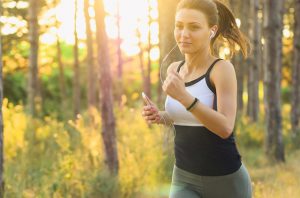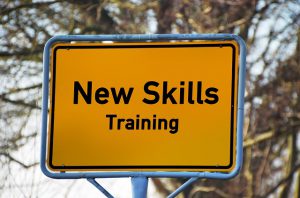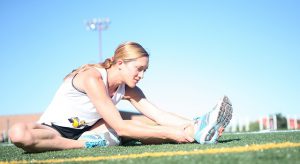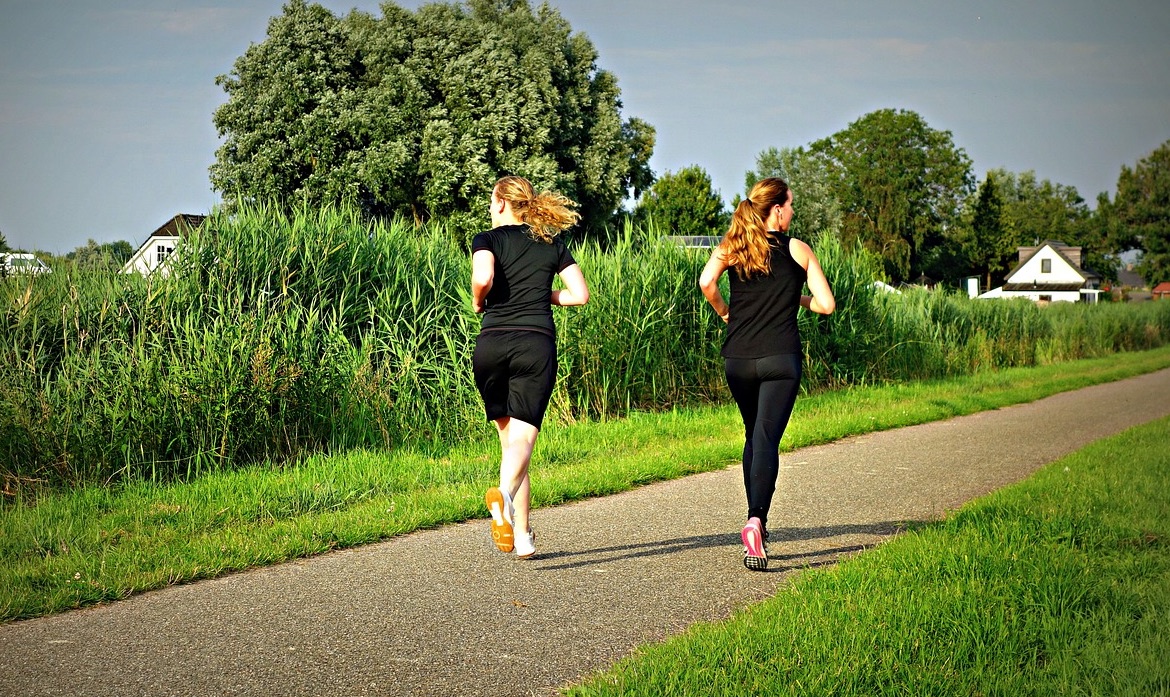Finally, spring is here, at the moment when I write this article.
And when spring is here, the weather invites you to go out more often for a walk or a jog.
If you want learning and enjoy the run please follow me in this article where I will share some running techniques for beginners.
Table of Contents
I start running 4 year ago and I thought I did well till the moment when a friend of mine invite me to a training for running techniques. What? Do I need a training for learning how to run?
As you imagine I start laughing in an instant. But I follow my friend to this training and I was surprise to see that we were not alone.
The training have had 3 steps:
- Step 1: Focus on lower body
- Step 2: Focus on upper body
- Step 3: What is a good stride and what is not? The purpose is to take a first step towards a more efficient stride allowing you to run faster with a lower effort
Interesting right? For beginners, I’ll talk about the lower and upper body muscles.
Running benefits
The benefits are for both beginner/enthusiasts and professionals .

First of all, it’s a good method to loss weight and then keep it. The running consumes 80 cal for each kilometer. It helps to improve the cardiovascular health.
During running, the body releases endorphins which help to cure depression and anxiety.
This is an aerobic exercise and the scientists discovered that the life expectancy is increased with 3 years.
1. Preventing loss of bone density and muscle tone
Running uses the bone and muscular system long enough to keep them in shape. Regular physical movement stimulates human growth hormone production
2. Disease prevention
Regular exercise has become a therapeutic alternative for the early stages of osteoporosis, diabetes and high blood pressure.
Running reduces the risk of a myocardial infarction, improving artery elasticity and reducing blood pressure.
3. Improving health
Running increases good HDL cholesterol in the body, reduces the risk of blood clots and stimulates lung function. In addition, this form of motion strengthens the immune system, increasing the concentration of lymphocytes, white blood cells that fight disease.
4. Stress release
Running is also an excellent form of elimination of tension accumulated due to daily stress.

Long-distance running also helps treat headaches on the nervous background, experts say.
5. Training the mind
The running trains the mind as much as the body.
The ambition of overcoming obstacles, improving concentration, and stimulating the need for self-deception are important psychological benefits offered by running.
6. Improving body coordination
The uneven surfaces, obstacles and correction of body posture help to develop better body coordination.
Known running techniques
I was surprised to discover that running has a couple of available techniques. You know that saying “The man, as long as he lives, learn”.
The most known techniques are Chi Running and Pose Running.
Both techniques are body friendly and are characterized by their slightly leaning position towards the front of the body.
The Pose has forefoot landing and Chi has mid-foot landing.
Pose running method was developed by Nicholas Romanov somewhere in ’70s and Chi Running was developed by Danny Dreyer in 1999.
Chi Running is a running technique very similar with yoga and it’s said that reduces the risks of injuries.
Teaching the technique – running sequences
Teaching running techniques became very popular lately.
As trivial it seems, running is composed of several moves.
The foot position relative to the ground: when the food is in the air we have the swing position.

The landing phase: when foot touches the ground known as foot strike.
At the moment when foot “leaves” the ground is the propulsion phase.
Are you still with me? OK. Let’s continue.
About the foot strike phase are debates how well it is from the health point of view and efficient to land.
There are 3 types of landing:
- – hell-strike
- – mid-foot strike
- – forefoot strike
There is the tendency of your body to incline forward when you run quicker. The landing will change based on your speed and anatomy of the field.
Basic rules for a correct running
– Right body posture
Stand straight! Look ahead, not at your feet or at the running track. When you are tired, often forget about this and you want to lower your head.
During running keep the trunk perfectly straight, with shoulders slightly raised. Push the hips forward and step so that you have full stability.
Hands should be at the level of the hips, the elbows bent at 90 degrees.
The arms move from the shoulder to keep the angle of 90 degrees.
It is wrong to run with your arms folded at the top of the body because you close the rib cage and less air enters the lungs.
Leave your palms as relaxed and held as if you had a sheet of paper between the thumb and the index finger.
Do not tighten your fists.
Your face should not be tense. Think of something beautiful while you run.
– Relaxation
The tension in the arms, shoulders, neck and face reduces the efficiency of the run.
– Breathing
It must be deep and rhythmic, never superficial. Exhale with a controlled force. Maintain a rhythm and you will gain more strength.
– Landing
At each new step, make sure the weight is distributed on the center of the sole, not on the toes or heels.
Preparing to run
You probably remember that when we were kids we didn’t need a preparing for run.
- Warming up
Rotate your head, arms and body. When you are run, you do not use only the feet, the whole body is moving.
You can make some squats, rotation of forearms and knees and stretch the legs very easily.
Do not force the muscles, stretch the leg slightly and hold for 10 seconds.
- Stretching to avoid injuries
Keep stretching for the end of the workout. Stretching when the muscles are not warm up can cause problems.

After running walk easy for couple of minutes.
Then repeat the exercises you have done to warm up and focus more on stretching.
Do not forget to drink plenty of water after running.
- Adapt for season
– if it’s warm avoid direct sun, wear sunglasses and cover your head
– do not wear to many clothes when is cold. You will lose more water through perspiration
– if you run under 0 degrees, cover all exposed skin
– wear reflex vests or other reflex elements if you run when is dark, you will be visible
– stay hydrated summer and winter
Focus on lower and upper body
Running uses the thigh muscles, the muscles of the lower limbs, muscles from hips and buttocks but also the muscles of the upper body – back and abdominal muscles.
So, how do I run?
I think it’s important to understand the running sequence and to use it instead of learning one technique and applying it in all situations.
When you are running on a flat, you try to land with your feet below the basin by making small steps.
Running uphill, probably you will run very slowly or you will walk. Downhill probably you will like most.
Be sure to share your thoughts in the comments below! I’m happy to hear your opinions.
Thanks for reading! If you’re interested in more running stuff, I recommend reading “Running athletic shoes – how to choose” article




Wow! You have covered a lot of information about running! I like how you listed the benefits of running and then described the process of running!
Great article!
Hey,
I will work on landing on the center sole of my feet when I am running, that should help the pain in my ankles sometimes after a run.
Thanks for the tip.
Hi Carlton,
Yes, you have to. Before knowing all the sequence I also had pains in my ankles. With practice you will results.
Thanks for your visit and comment!
Stay healthy!
Hi, Dany,
Before I read your text, I didn’t know how many details I had to pay attention, to squeeze the maximum of running! Thank you for your advice – it was beneficial to improve my running technique!
As stretching becomes more and more important to me with the years rolling, I would appreciate if you could share some exercises that you use, to stretch well before running.
Thank you
Hi Tony,
I know, same here. Before learning all the techniques, I was getting tired really soon after start. You’re very welcome!
Stretching is very important after each workout, not only running. But, in our case, stretching is recommended after run. It’s the same with practicing yoga in the morning. You can do it, but not immediately after you put your feet on the ground. Let your body to get used with the new day.
As for warming up exercises before running, you can do like this: rotate your head, arms and body; make some squats, rotation of forearms and knees and stretch the legs very easily.
I hope this helps! Let me know how is your technique after this.
Thank you for your visit and comment!
Stay healthy!
Thank you, Melissa. Glad to share 🙂
Stay healthy!
Hi Dany,
This was a very comprehensive and helpful post of running techniques. I find that for me as I have aged it is easier to walk and then run a bit and alternate. Found the positioning of the body and foot strike information very helpful and will make sure I watch how I hold my hands too. How far to you run?
Hi Jill,
Thank you kindly for your comment. Yes, it’s a good practice, I call it interval training 🙂 The position of the hands is important. I do not know if you noticed, but you get speed using your hands. I know sounds odd, but it’s true.
I usually run around 5k, just to keep in shape.
Thank you again for your visit and comment!
Stay healthy!
Wow, a lot of great information about running. I have never thought about running techniques. I used to think running is just running and there won’t be any technique involved. After reading your post, I realized the things I was doing wrong. I will keep your article as my future reference when I decide to run again once the weather gets nice. Thank you for sharing.
Hi Hong,
Thank you kindly for your comment. Yes, same here, I thought running is just running without techniques 🙂
Come back with a comment and let me know how is your technique.
Stay healthy!
I wish I could have read that before I injured myself while running a couple years ago. Since then, I haven’t been able to run anymore without pain in both knees. Well, good advice anyway, I hope it can become handy one day, if I ever go back running! Cheers!
Hi Ben,
Sorry to hear this. I hope it’s nothing serious. As I mentioned, running has a lot of benefits. Have you tried interval training?
Get back with a comment and let me know about your progress.
Thank you for your visit and comment.
Stay healthy!
Hey Dany,
thank you so much for that guide! I didn’t know that there are really any “techniques” other than “get good shoes” and “practice running” that one should apply when starting out. Wow! I will definitely have to pay attention to that the next time I run. Very eye-opening article!!!
Thanks,
chris
Hi Chris,
You’re very welcome! I know what you mean. I was like you: get good shoes and run 🙂 Let me know if you apply the advice and how is your running.
Thank you for your visit and comment.
Stay healthy!